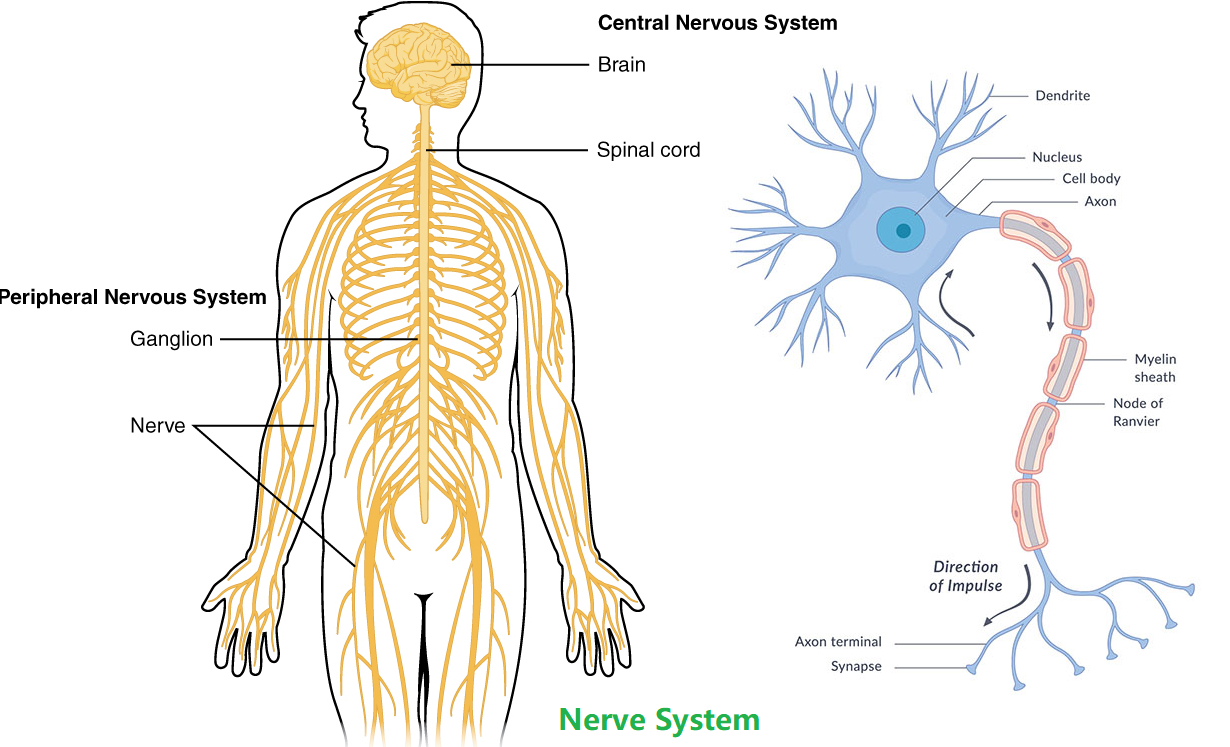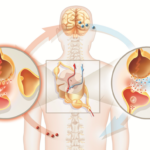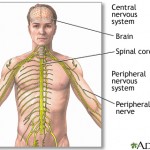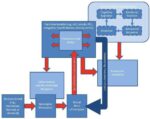One physician even remarked that pain is whatever the patient says it is. So let’s just say that pain is a warning sensation to your brain that some type of stimulus is causing or may cause damage, and you should probably do something about it.
Pain perception, or nociception (from the Latin word for “hurt”), is the process by which a painful stimulus is relayed from the site of stimulation to the central nervous system. There are several steps in the nociception process:
- Contact with stimulus — Stimuli can be mechanical (pressure, punctures and cuts) or chemical (burns).
- Reception — A nerve ending senses the stimulus.
- Transmission — A nerve sends the signal to the central nervous system. The relay of information usually involves several neurons within the central nervous system.
- Pain center reception — The brain receives the information for further processing and action.
Nociception uses different neural pathways than normal perception (like light touch, pressure and temperature). With nonpainful stimulation, the first group of neurons to fire are normal somatic receptors. When something causes pain, nociceptors go into action first.

The Nervous System
This page outlines basic concepts related to the nervous sytem. Separate pages describe the brain and spinal cord, and control of skeletal muscle.
- The nervous receives information about conditions both within and around the body. It processes and integrates this information on a variety of levels, and directs the body to respond appropriately. The basic organization of the nervous system follows this flow of information:
- Afferent or sensory neurons collect stimuli received by receptors throughout the body, including the skin, eyes, ears, nose, tongue as well as pain and other receptors in the internal organs.
- Sensory information is transmitted to the central nervous system, which includes the brain and spinal cord. The CNS is responsible for integrating the sensory information and directing any necessary response.
- The CNS controls the rest of the body via efferent neurons, of which there are two subdivisions:
- Efferent neurons to the skeletal muscles, which are under voluntary or conscious control, comprise the somatic motor division.
- Efferent neurons which direct contraction and secretion in the internal organs fall within the autonomic division. The autonomic division is in turn divided into the sympathetic and parasympathetic divisions.
- The neuron, or nerve cell, is the basic functional unit of the nervous system. There are many types of neurons throughout the nervous system, but they share some common features:
- The cell body contains the nucleus and other organelles essential for the survival of the neuron. It is usually small compared to the rest of the neuron.
- One or more dendrites extend like tendrils from the cell body. The dendrites serve to receive incoming electrical signals from other neurons.
- Most neurons have a single axon to transmit outgoing signals. Axons vary in length from micrometers to over a meter. Portions of the axon are insulated by supporting cells with myelin, a phospolipid membrane.
- Neurons carry information from one end of the cell to the other by generating and propagating electrical signals.
- The potential difference across the neuron cell membrane is the basis for generating electrical signals. Much like a battery, this potential is creating by the uneven distribution of ions on either side of the membrane.
- Two factors influence the membrane potential difference:
- The concentration gradient, or difference in concentration, of different types of ions across the neuron cell membrane. The two major ions that influence potential difference are sodium, which is abundant outside the cell, and potassium, which is abundant inside the the cell. Both of these ions have a charge of +1.
- The permeability of the membrane is differenct for different types of ions. Ions can only move across the membrane through pores or channels that only allow specific types of ions to pass through. At rest, neuron cell membranes are impermeable to sodium and only slightly permeable to potassium. Potassium tends to leak out of the neuron, leaving the inside of the membrane slightly more negative than the outside due to the loss of positive charge.
- The neuron generates electrical signals by sudden changes in permeability to ions, particularly sodium. The process begins with the opening of sodium channels. Because sodium is more abundant outside the membrane, and because the inside of the membrane is slightly more negative than the outside, sodium ions tend to rush into the cell through the open channels. This tends to depolarize the cell, reducing the charge difference across the membrane.
- The initial opening of sodium channels may be caused either chemically or mechanically (deformation of the cell membrane). This signal is propagated by sodium channels that are sensitive to the initial voltage change. These sodium channels are opened the sudden influx of positive charge through neighboring channels, causing the signal to spread from the site where it began.
- Once an area of the neuron cell membrane has depolarized and passed on a signal, it needs to repolarize before it can transmit another signal. This is accomplished by the opening of potassium channels in the membrane. Since potassium is much more abundant inside the cell, it tends to leak out and carry positive charge with it. This tends to restore the resting membrane potential.
- Neurons communicate with neighboring neurons and other types of cells by secreting minute amounts of different types of small molecules, which collectively are called neurotransmitters. The space between cells where this transmission occurs is known as the synapse. A sequence of steps typically occurs at the synapse whenever a neuron communicates with another cell:
- Electrical signals originating in the body a neuron reach the end of the cell’s axon.
- Depolarization of the axon terminal leads to fusion of packets of neurotransmitter with the cell membrane, releasing the molecules into the synapse.
- The neurotransmitter molecules diffuse across the membrane to reach a dendrite or cell body of the target cell.
- The neurotransmitter molecules bind to specific receptors on the target cell membrane, leading to the creation of an electrical signal or other action.



